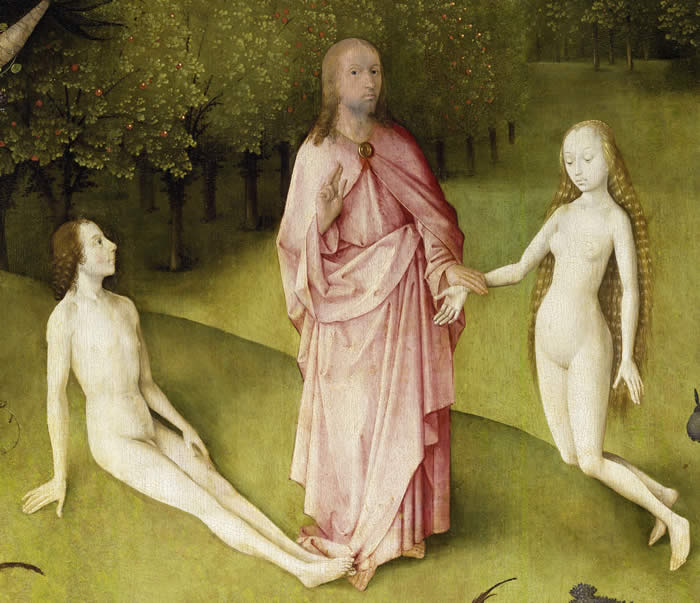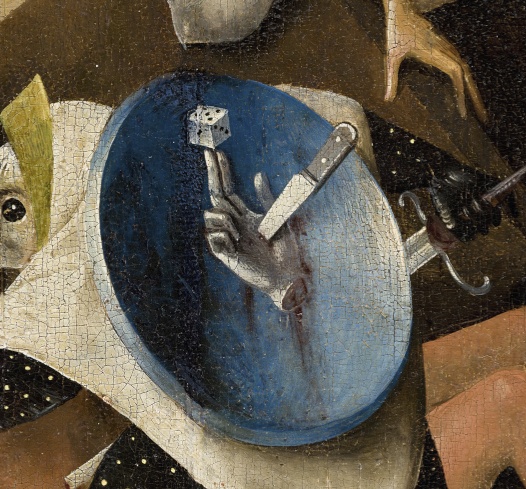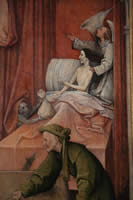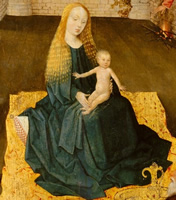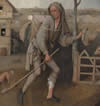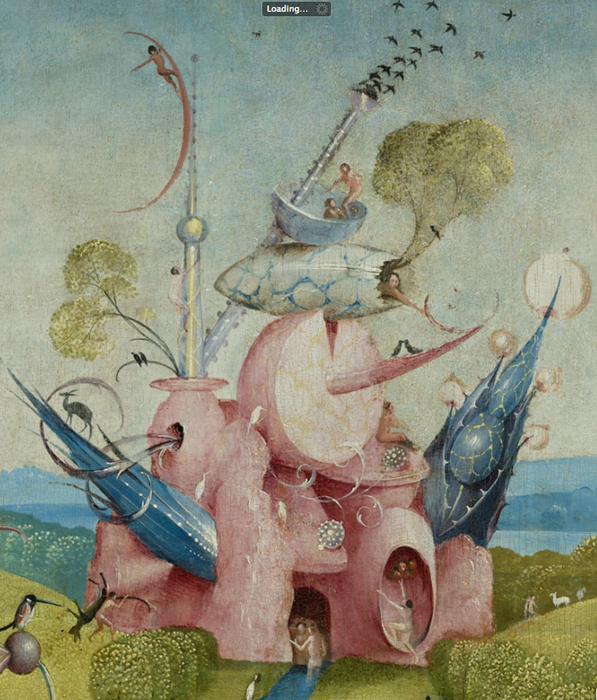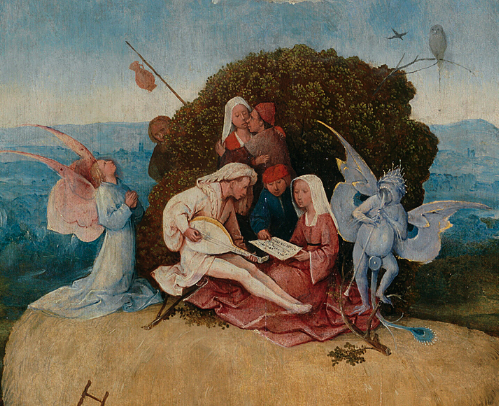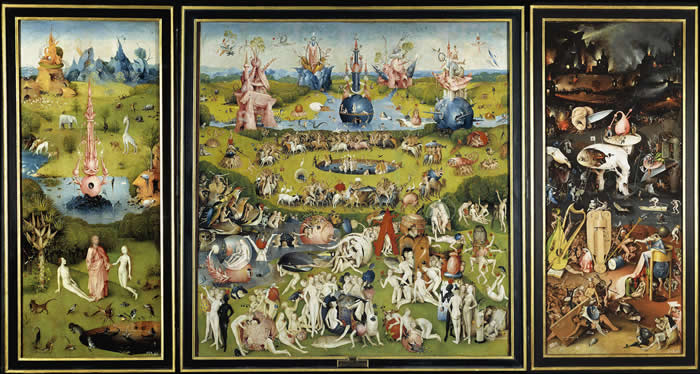
New Essays:
The Fruit of the Intellect in the Garden of Earthly Delights (2016)
The Use of Transparency in the Garden of Earthly Delights (2017)
Commentaries on the esoteric meanings in the paintings of Hieronymus Bosch
Now available for download in Book Format
Also available as an e-book on the itunes bookstore.
The Garden of Earthly Delights
slide show commentary
slide show commentary
An Essay
Commentary page
The Adoration of the Magi: foreground
and
Commentary page
an essay on the inner meanings
The Haywain
slide show commentary
work in progress
Hieronymus Bosch is one of the most cryptic artistic figures of the Northern Renaissance. Not only have his paintings baffled art experts and critics and defied rational interpretations for centuries, we know almost nothing about the man, who he was, where he came from, or why he painted what he painted. He remains, much like William Shakespeare, a cipher.
The reasons are simple enough. Both men were almost certainly members of esoteric schools whose artistic endeavors were undertaken in order to illustrate the nature of man; they did not crave public adulation or wealth, and did little or nothing to acquire it. Men of this kind leave very few marks behind them, except the great artistic achievements that defined their lives.
Bosch's paintings, as it happens, are by no means as mysterious or impossible to understand as their reputation suggests. The artist was nothing if not meticulous in establishing a clear set of symbolic meanings in his artwork, so that a reader who read them with attention and understanding would decode almost every image in the painting without fail, and understand that every single one of them was related.
He furthermore went to great pains to make it patently obvious that each of these two great paintings represented a particular side of man: The Garden of Earthly Delights, man's inner life; and The Haywain, his outer life. Understandings of the difference between man's inner or spiritual and outer or temporal life are nothing new to religion or esotericism; the subject has been studied for thousands of years, so it is unsurprising to see a figure from the Northern Renaissance —clearly, judging from the extraordinary quality and completely unique nature of his paintings alone, a genius — investigating these questions at depth.
What is surprising is to see the man's intentions regarding his paintings misunderstood for so many centuries, when he went to such great pains to make them clear.
Later artists copied Bosch's unusually imaginative and frequently monstrous or gruesome devices, but failed to understand in any measure the intricate and brilliant nature of his symbolism, or employ anything like it. Bosch's paintings reveal a comprehensive metaphysical analysis of the divine and the natural, the sacred and profane; his imitators just painted pictures of creepy demons torturing people. That kind of thing sells, it's true; but Bosch had much more serious things in mind when he painted.
These web pages present an extensive, in-depth series of slideshows intended to conclusively demonstrate what Bosch intended to his viewers to understand, along with a detailed analysis of his symbolism and methodology.
The aim of the commentaries is to return these paintings to their rightful place at the center of man's dialogue about his inner state.
Contact
Lee's blog on esoteric matters
Other esoteric studies
![]() A Doremishock resource; all material copyright 2013 by Lee van Laer
A Doremishock resource; all material copyright 2013 by Lee van Laer
